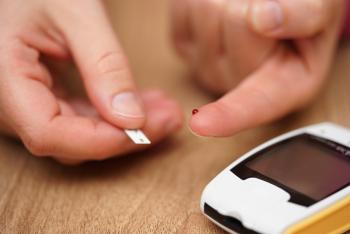Discover how high blood sugar impacts your body, from dental complications to kidney damage, and...
Read More
Ingrown toenails, although painful, are relatively common and easily treatable. However, early diagnosis and appropriate treatment are crucial to prevent complications like infection. While some cases can be managed with at-home remedies, it's important to seek medical attention if your symptoms persist or worsen.
Learn more about the steps you can take in the instance of an ingrown toenail and the best ways to alleviate it;
An ingrown toenail occurs when the edge of the toenail, typically on the big toe, grows into the surrounding skin, often causing redness, swelling, pain and potential infection.
Common symptoms of an ingrown toenail include:
A podiatrist can diagnose an ingrown toenail through a physical examination. They will assess your affected toe and check for redness, swelling and tenderness. “They may also ask about additional symptoms and your medical history to rule out underlying conditions,” said Michael Flatley, D.P.M., podiatrist.
Treatment, whether at home or by a health care professional, aims to alleviate symptoms and promote healing. “Mild cases of ingrown toenails can be managed at home by soaking your foot in warm, soapy water for 15 to 20 minutes several times a day and applying a topical antibiotic ointment,” said Dr. Flatley. “Wearing open-toe shoes can help reduce pressure on the toenail and promote healing.” If your ingrown toenail or symptoms don’t improve, it’s time to contact your health care provider.
“In more severe cases, your health care provider or podiatrist may recommend a procedure—known as partial or total nail avulsion—to remove the entire nail or the ingrown portion,” said Dr. Flatley. This procedure is typically performed in a medical office, with a local anesthetic to minimize pain.
Afterward, proper wound care is necessary to ensure a full recovery. If there is an infection present, your provider may prescribe antibiotics to treat it. “In cases where the total nail is removed, it may take two to four months for your toenail to grow back,” said Dr. Flatley.
Proper foot care is key to preventing future problems and reducing the likelihood of another ingrown toenail. “Avoid cutting your toenails too short and always trim them straight across, as rounded nails are more likely to grow into the skin,” said Dr. Flatley. “Choose shoes that fit well and leave adequate space for your toes. And in general, change your socks regularly to keep your feet clean and dry and reduce the risk of infection.”
If you find yourself dealing with this uncomfortable condition, don't hesitate to reach out to your health care provider or consult a podiatrist for guidance and treatment options. Your feet will thank you for it.
To schedule a visit with an Inspira podiatrist, make an appointment online or call 1-800-INSPIRA.

Discover how high blood sugar impacts your body, from dental complications to kidney damage, and...
Read More
Most people experience foot pain at some point in their lives, but it is important to know when to...
Read More
As we return to the office or classroom, we’re on our feet more. Here’s what you need to know about...
Read More
The material set forth in this site in no way seeks to diagnose or treat illness or to serve as a substitute for professional medical care. Please speak with your health care provider if you have a health concern or if you are considering adopting any exercise program or dietary guidelines. For permission to reprint any portion of this website or to be removed from a notification list, please contact us at (856) 537-6772